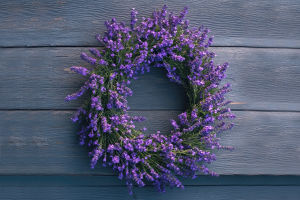Hello Lykkers! Growing healthy plants can be a joy, especially when every leaf and flower thrives under your care. But what happens when the only water available has a high salt content? Can plants still flourish?
Saltwater may seem harmless, but it can affect plants in unexpected ways. This guide covers the benefits, risks, and special cases of using saltwater for irrigation—helping you keep your plants healthy and thriving!
Pros and Cons of Saltwater Irrigation
In areas where freshwater is scarce, using saltwater for irrigation may appear to be a practical choice. Some plants can handle a certain level of salt in their environment, and in rare cases, even benefit from it. However, this practice is generally limited to specific types of vegetation and controlled environments.
- Potential Benefits: A small amount of salt in the water can stimulate growth in a limited number of plants that are naturally adapted to salty environments. These plants, known as salt-tolerant species or halophytes, can not only survive but even thrive in coastal areas or salt-heavy soils.
- Main Drawbacks: For most plants, especially those commonly found in gardens or grown indoors, salt in irrigation water causes several problems. High salt concentration can lead to poor water absorption, leaf damage, stunted growth, and a decrease in flower or fruit production. Over time, soil structure also deteriorates, becoming compact and less able to hold water. This makes it difficult for roots to breathe and for nutrients to reach the plant.
How Salt Affects Soil and Plant Health
Salt doesn't just stay on the surface — it works its way into the ground and disrupts essential processes that plants rely on to live.
- Water Absorption Issues: Salt in the soil interferes with osmosis, the process by which plants absorb water through their roots. When there is more salt outside the roots than inside, water actually moves out of the plant instead of in. This causes dehydration, even if the soil appears wet.
- Visible Plant Symptoms: At first, leaves may develop a faded or scorched look, eventually turning yellow. Growth slows down, flowers become rare, and the plant may begin to lose its leaves. In extreme cases, the plant withers entirely.
- Long-Term Soil Damage: Soil exposed to repeated salty irrigation becomes dense and poorly aerated. Salt builds up over time, making it even harder for future plants to grow, unless the soil is thoroughly flushed and restored with clean water.
Plants That Can Live With Salt
Though most plants suffer from salt exposure, a few have adapted to handle it well. These include wild varieties that naturally grow near coastlines or in salty wetlands.
- Halophytes: These are plants that can absorb salt into their cells and use it to their advantage. Examples include sea asparagus and some types of marsh grass. Their cellular structure and unique chemistry allow them to survive — and even need — a salty environment.
- Wax-Covered Plants: Certain plants have waxy coatings on their leaves that help salt slide off before it can be absorbed. This is a protective feature that prevents damage and allows the plant to continue photosynthesis without interruption.
- Recommended Species: A few hardy varieties include sea fennel, some kinds of statice, and species of artemisia. These are suited for coastal gardens or areas where freshwater is limited. On the other hand, popular plants like roses, sunflowers, tulips, and many indoor types should always be given clean, freshwater for the best results.
Conclusion: Smart Choices for Healthy Plants
Dear Lykkers, while saltwater might seem like a tempting solution when fresh water is limited, it's essential to understand the lasting impact it can have on both your plants and the soil they grow in.
Most plants do not tolerate salt and can be seriously harmed by even moderate levels. However, with the right knowledge and the right choice of species, it is possible to manage a garden that includes plants adapted to saline environments.
For most home gardening, the best approach is to stick with freshwater and reserve salty irrigation only for those rare plants that truly require it. With mindful care and informed decisions, your plants can grow lush, vibrant, and strong — just the way nature intended.


